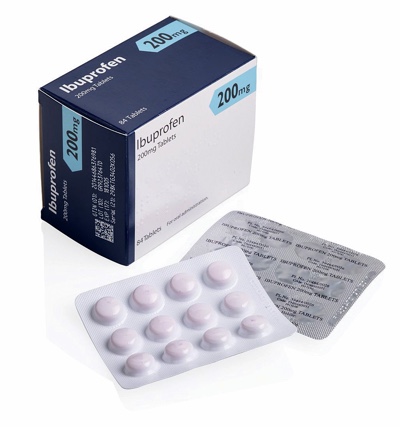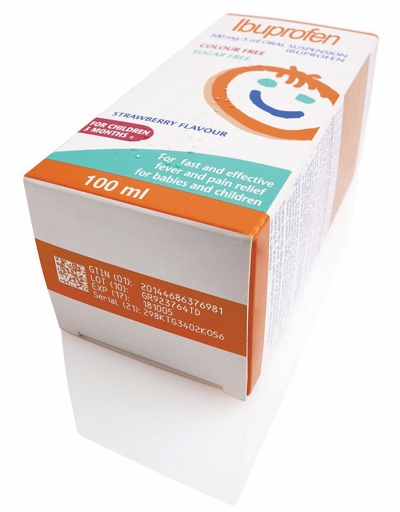The ability to track and trace medicines and pharmaceutical products throughout the supply chain via human and machine-readable codes is becoming increasingly critical, as the legislative requirements of the FMD — and the deadline of February 2019 — is getting closer. Its implementation across the pharmaceutical industry will require medicine manufacturers to ensure that their serialisation solutions adhere to the guidelines stipulated by the new law. Manufacturers that are not equipped and ready by the deadline will no longer be able to distribute their products and they could potentially lose their overall market share.
By introducing the new FMD regulation, the EU is demanding that manufacturers of pharmaceutical goods sell their products in tamper-proof packaging that will feature a 2D data matrix code. A human readable unique serial number is required, as well as a product code, batch number and expiry date for the contents. The data, or unique identifier (UI) code on the packaging, is stored on the European Medicines Verification System (EMVS) database prior to distribution; the product in question can then be tracked through the National Medicines Verification System (NMVS) at each stage of the supply chain. Any issues or inconsistencies with products that arise will be flagged in the systems and the medicine in question will instantly be rejected by the respective party. This information is then passed on to the Medicines and Healthcare Products Regulatory Agency, which may wish to investigate the product in question, as well as the company that manufactured it.
What role do coding and marking technology providers have to play?

With clear and concise serialised codes, batch numbers, expiry dates, Global Trade Identification Number (GTIN) and 2D data matrix codes at the centre of the FMD, pharmaceutical manufacturers must evaluate whether their current coding and marking systems meet requirements. Suppliers of the technology are available to provide support to manufacturers to help identify what will be required for each level of packaging, an overview of current coding and marking technologies available and an analysis of the currently installed equipment.
All products under the FMD will need to have clearly displayed, legible codes that can be read by the human eye and a scanner. Equipment that produces incomplete codes or uses ink with poor adhesion qualities will lead to product rejection, rework or recall.
This can cause a backlog in the supply chain, resulting in downtime and substantial costs to the company. By liaising with their coding and marking partners, pharmaceutical manufacturers can avoid these pitfalls and find out exactly what they will need to do to become compliant ahead of February 2019.
What coding & marking technologies are best deployed for tackling compliance and serialisation requirements?
There are many coding technologies available, with some better suited to the demands of high speed serialisation than others. Ranging from inkjet to laser, the solutions available can produce codes that will ensure packaged products adhere to FMD regulations, decreasing rejects and sustaining production.
For the delivery of the sharpest and clearest data at high speeds, thermal inkjet (TIJ) printers provide high-contrast and extremely durable print methods, ensuring long-lasting print visibility throughout each stage of the supply chain. With superfast drying capabilities — vital for the subsequent addition of tamper evident labels — TIJ printers can produce high quality alphanumeric text, barcodes and 2D data matrix codes with excellent adhesion onto a variety of porous and non-porous packaging surfaces.
Laser printers are also capable of delivering high speed and high-quality codes onto multiple substrates. The technology produces durable, indelible serial numbers and matrix graphics onto the different packaging types. Laser printers are not only suitable for delivering the necessary FMD coding requirements, but they are also a more sustainable alternative as they require no inks or solvents, reducing a company’s overall carbon footprint.
With a compliance deadline of February 2019, what should small and medium-sized pharmaceutical companies be doing now to be sure of meeting the requirements of the FMD?
If companies have yet to start their serialisation journey, then they need to contact their coding and marking technology supplier as soon as possible. There will be no exception for manufacturers who do not adhere to the February 2019 deadline — whether it’s a prescription medicine or a “black list” OTC medicine, the outcome is the same, the product cannot be sold within Europe. As a result, medicines will sit in warehouses and be deemed unfit for distribution under the FMD regulations, which will lead to products becoming void … at a significant expense to the company. What’s more, while the products are not being sold, competitors may be able to gain a greater share of the market, potentially making it difficult for the business to re-enter trade at levels it had been achieving previously.

February 2019 might seem far away, but the amount of time it takes to change or update coding and marking technology is not a fast process; in fact, it can take 6–12 months for newly installed serialisation components to return to preserialisation OEE levels within the production process, owing to the chain reaction that these alterations can cause across the business.
This is because of the serialisation equipment’s interaction with other departments, such as IT and quality control. Testing will need to be performed to make sure that all sections of the business are working in tandem and the new or upgraded serialisation equipment is fully integrated.
Seeking advice now will give companies sufficient time to make any necessary changes to their equipment and production practices. The later companies leave it to review their coding and marking equipment, the more at risk they will be of not being compliant by the deadline.
Companies may also experience longer lead times, as technology suppliers strive to keep up with the increase in demand for the traceability solutions required to meet the regulation.
Domino Printing Sciences has been providing its coding and marking solutions to the pharmaceutical industry for more than 15 years. Domino’s devoted sales and support teams help pharmaceutical companies from the consultation and purchase phase through to setup and ongoing servicing. Domino and its partners have the experience and the technology to help support small-to-medium sized manufacturers through to compliance within 6 months, ensuring products continue to be sold legally and safely within Europe.




